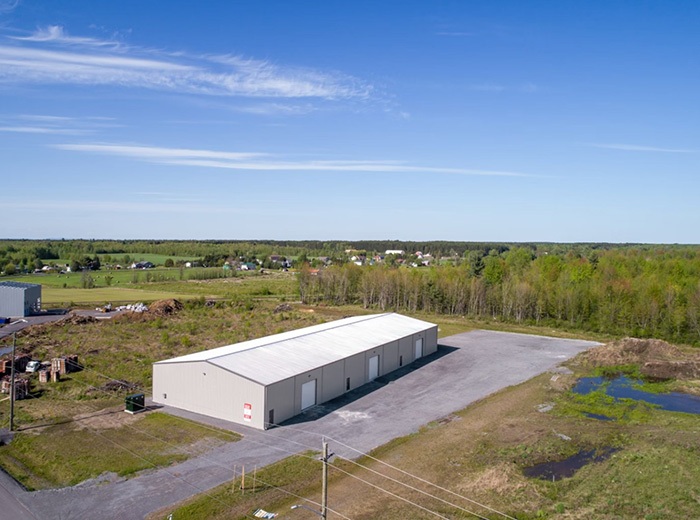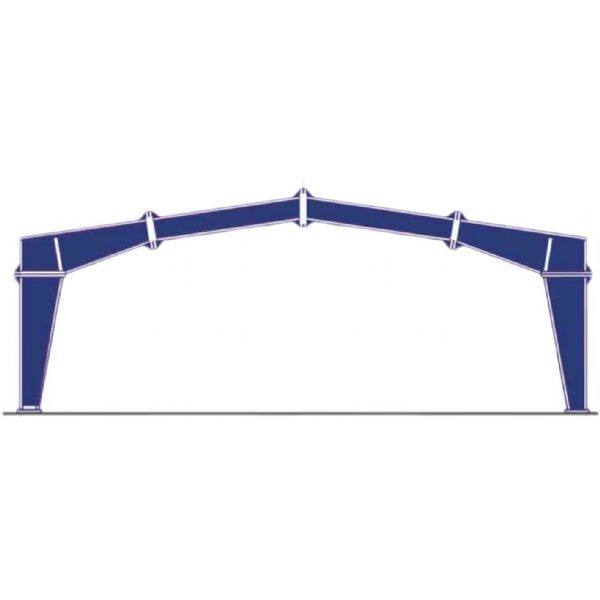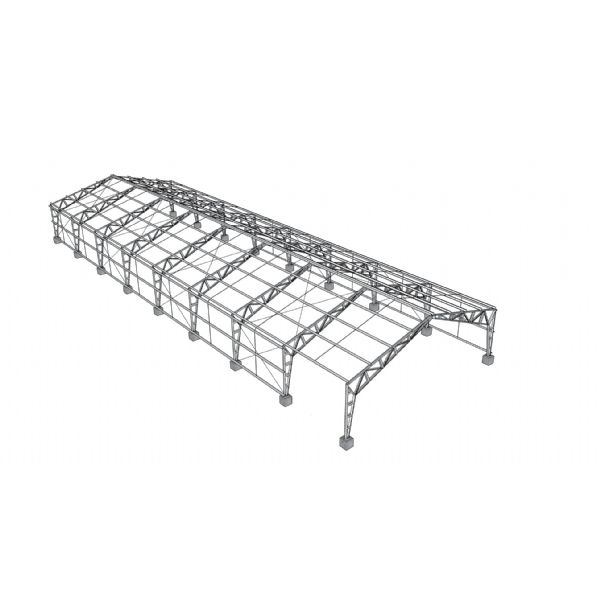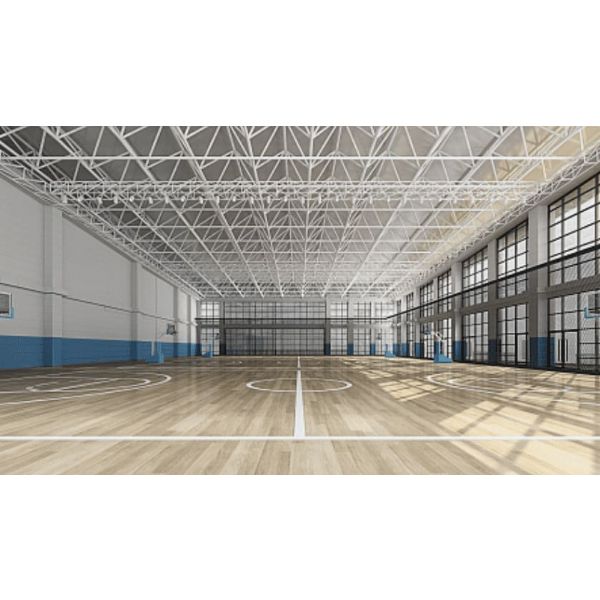The modern logistics and warehousing industry is growing rapidly, and companies want efficient, durable, and affordable warehouse buildings.
Among the many options, steel warehouses are the top choice. Their core steel frame, combined with advanced building systems, allows for flexible adaptation to changing business conditions. Compared to concrete and wooden warehouses, steel warehouses offer larger spans, faster construction, and decades of practicality. They are particularly well-suited to today’s storage needs, which require automation and heavy equipment. Below, we’ll discuss the definition, advantages, design, and planning of steel warehouses to help you choose the right storage solution.
What is a steel structure warehouse?
Definition and Basic Structure
A steel warehouse is a specialized storage building with steel as its core load-bearing frame. Construction requires precise calculation of the required steel strength to ensure the steel frame can accommodate the weight of the cargo and equipment. Three key components are crucial: the steel frame serves as the “skeleton” supporting the entire warehouse; the metal cladding provides protection from wind and rain, heat and cold; and the roof must be water-draining, load-bearing, and energy-efficient.
Compared to traditional warehouses, steel warehouses offer significant advantages: Concrete warehouses rely on heavy structural members for load-bearing, resulting in slow construction and small spans; wooden warehouses are susceptible to insect infestation and rot; steel warehouses, on the other hand, utilize lightweight steel, offer large spans, fast construction, and are easily remodeled, making them more suitable for modern storage needs.
Steel Warehouse Building Types
There are three main types of steel warehouses. Prefabricated steel warehouses are the mainstream, with steel columns and beams fabricated in the factory and transported to the site for immediate assembly. These warehouses offer fast construction, consistent quality, and are suitable for projects with tight deadlines. Structural steel warehouses are heavy-duty, constructed using high-strength Q355 and Q235 steel. They can accommodate heavy racking and large equipment, often storing industrial raw materials or heavy machinery. Cold-bent thin-walled steel structure warehouses are lightweight, with steel thickness of only 3-6 mm. They are light and cheap, making them suitable for small and medium-sized projects such as storing agricultural products or small e-commerce goods.
The main advantages of steel structure warehouse construction
Durability and lifespan
Steel warehouses are exceptionally durable. Galvanized or fluorocarbon-coated steel components withstand rain, intense sunlight, high temperatures, and low temperatures, making them reliable in both the rainy south and the frigid north. Regarding fire protection, steel itself is non-flammable, and fire-retardant coatings effectively resist fire, making them significantly safer than wooden warehouses. Furthermore, steel warehouses are insect-resistant and mold-resistant, unlike concrete warehouses, which are prone to cracking and leaking. With proper maintenance, they can last for over 50 years, 10-20 years longer than concrete warehouses and 30-40 years longer than wooden warehouses.
Construction speed
Steel warehouses are quick to construct because the steel components are factory-assembled. On-site installation requires only hoisting and assembly, eliminating the need for maintenance and curing required for concrete warehouses. A 1,000-square-meter steel warehouse can be completed in just 2-3 months, from component delivery to completion, 30%-50% faster than a concrete warehouse. On-site installation relies on mechanical hoisting, requiring 40% fewer workers than a concrete warehouse. Furthermore, there’s no need to worry about rain, snow, or high temperatures—the components are pre-assembled in the factory and then installed in good weather, ensuring a guaranteed construction schedule.
Cost-effectiveness
Steel warehouses offer low initial costs. While steel is expensive per unit, the components are lightweight, construction is quick, and they save on labor and equipment rental. A 1,000-square-meter steel warehouse is over 10% cheaper than a concrete warehouse. Long-term maintenance is also cost-effective. Steel components only need to be painted every five years, with an average annual maintenance cost of only 0.1% of the initial investment, significantly lower than concrete and wooden warehouses. Furthermore, steel warehouses offer excellent insulation, reducing air conditioning and heating energy consumption by 20%, and insurance companies can offer premium discounts.
Design flexibility
Steel warehouses can create column-free spaces exceeding 60 meters, eliminating the need for dense columns like concrete warehouses. This makes them ideal for heavy-duty racking, forklift access, and automated sorting systems, making them particularly suitable for large logistics centers and e-commerce warehouses. Future expansion is simple: add steel columns and beams adjacent to the existing steel warehouse without dismantling the existing structure and disrupting operations.
For example, a large steel warehouse for an e-commerce platform initially occupied 5,000 square meters. Two years later, when it was discovered it needed expansion, it expanded by 2,000 square meters in just one month. Furthermore, steel warehouses can be repurposed, from warehouses for storage and freight to production workshops, simply by adjusting the internal layout. Cold storage warehouses can also be customized by adding insulation.
Environmental Benefits
Steel warehouses are environmentally friendly, with 100% recyclable steel. Dismantled steel components can be reprocessed and reused, resulting in a recycling rate exceeding 90%, significantly higher than concrete (less than 30%) and wood (which has a lower recycling value). Construction waste is also minimal. Factory-fabricated steel components are exact and require minimal on-site cutting, resulting in only 10% of the waste generated by traditional warehouses. Choosing energy-saving cladding and installing photovoltaic roofing can also reduce energy consumption, save water, and even obtain green building certification to enhance the company’s image.
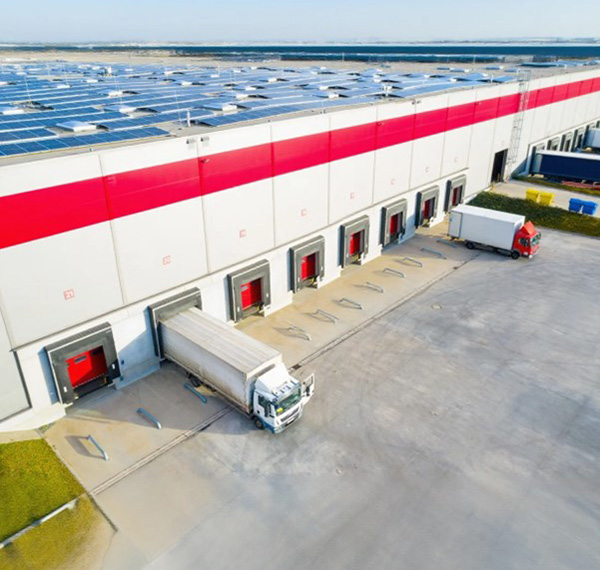
Steel structure warehouse design considerations
Structural design elements
The foundation of a steel warehouse should be selected based on the site’s soil: for solid soil, use an independent foundation directly connected to the steel columns; for soft soil, use piles to transfer the weight to the deeper soil layers to prevent sinking. Steel frame design prioritizes strength. The required column and beam sizes are calculated based on the weight of the cargo and shelves. Q235 steel is used for light-duty storage, while Q355 steel is used for heavy-duty storage.
High-strength bolts are used to connect the beams and columns for better seismic resistance. Accurate load-bearing calculations are crucial, considering both static (warehouse weight, snow accumulation on the roof) and dynamic (forklift movement, cargo impact), while also allowing for a safety margin. Steel warehouses storing heavy machinery are designed for 5-10 kN/m², while those storing light cargo are designed for 2-3 kN/m².
Foundation system and frame design
Steel warehouse floors utilize C30-C40 concrete slabs, typically 150-200 mm thick, with bidirectional steel mesh reinforcement. The foundation must be leveled, with a top surface tolerance of no more than ± 5 mm. A moisture barrier is also required to prevent soil moisture from corroding the steel. Portal frames are commonly used for steel warehouses with spans of 10-30 meters.
These frames offer high space utilization, while large warehouses with spans over 30 meters use rigid frames for enhanced earthquake resistance. Column spacing is determined based on demand, with 6-9 meters for heavy-duty racking and 9-12 meters for bulk cargo storage. A balance must be struck between space and cost. The roof slope depends on the weather: 5%-10% in rainy areas and 10%-15% in snowy areas. The roofing material should also be suitable: standing seam metal roofs are suitable for slopes of 5%-15%, while roll roofing is suitable for slopes of 2%-5%.
Regarding the building envelope and interior layout
Steel warehouse walls can be constructed with single-layer color-coated steel plates or color-coated steel sandwich panels. The roof should be constructed with standing seam metal roofing (which offers excellent sealing, withstands force 12 winds, and lasts for over 20 years, making it the preferred choice for large warehouses) or roll roofing (which is economical and easy to install, and is suitable for small and medium-sized warehouses). Gutters and downspouts should also be installed for drainage.
For insulation, fill the steel purlins with insulation, add a ventilation layer to the roof, and apply reflective coating in the summer. The interior layout takes advantage of its large spans: the column-free space is divided into racking and sorting areas, with rack heights up to 10 meters, improving vertical space utilization compared to traditional warehouses. The office area can be constructed as a steel mezzanine, eliminating the need for storage space. The loading and unloading platform is located along the long side of the warehouse, 1.2-1.4 meters high (to accommodate trucks), and features a non-slip ramp and canopy, allowing operations even in rainy and snowy conditions.
Steel structure warehouse applications and industries
Common Applications
Distribution logistics centers are the primary application for steel structure warehouses. Their large-span spaces can store massive quantities of goods and accommodate automated equipment. Regional logistics centers operated by JD and SF Express utilize steel structure warehouses, processing over 100,000 orders daily on average. Manufacturing plants use steel structure warehouses to store raw materials (such as steel and automotive parts) and finished products.
These warehouses have sufficient load-bearing capacity and are located close to production facilities, making transportation convenient. Refrigerated warehouses opt for steel structure warehouses, which can maintain temperatures below zero for extended periods when equipped with insulation layers. Compared to concrete refrigerated warehouses, they offer energy savings of 15%-20%, making them commonly used in the food and pharmaceutical cold chain. In agriculture, steel structure warehouses are used to store grain, agricultural machinery, and agricultural products. They have excellent weather resistance and are unaffected by environmental conditions.
Industry-specific advantages
E-commerce distribution centers commonly use steel structure warehouses, which can quickly expand their area during periods of high order fluctuations (such as during “Double Eleven” by adding temporary zones. The column-free space also allows for flexible adjustment of shelving. Automotive parts storage requires high load-bearing capacity and sufficient ceiling height. Steel structure warehouses can accommodate 6-8 meter multi-tier shelving, and the steel frame is stable and resistant to collapse.
Food and beverage storage in steel structure warehouses allows for temperature and humidity control, and steel materials do not harbor bacteria, making cleaning convenient. Retail distribution centers use steel structure warehouses with large spans to accommodate multiple sorting lines. Those near commercial districts are designed with 2-3 floors to save land and enable quick restocking.
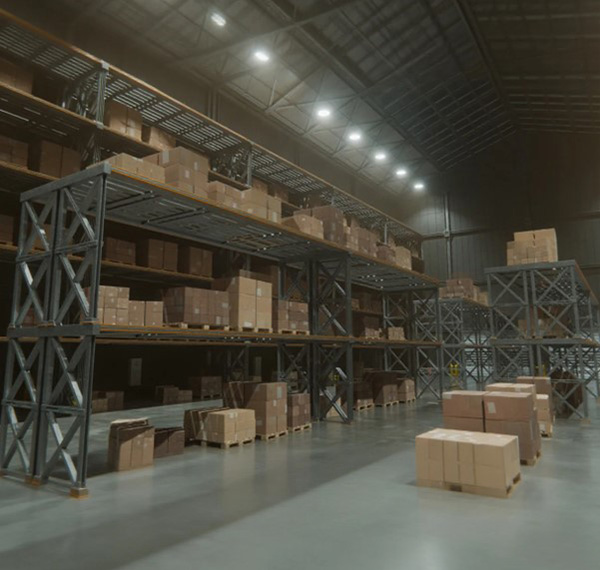
Planning your steel warehouse project
Site selection and location The location of a steel structure warehouse must comply with local planning regulations, and planning and construction permits must be obtained in advance. The site should be close to a main road for easy access by trucks, with internal roads wide enough to allow semi-trailers to turn, and a paved loading and unloading area. It is also necessary to confirm that water, electricity, and drainage are available nearby, and that gas or electricity is stable for refrigerated steel structure warehouses.
Cooperation and Financing
Steel structure warehouse contractors should be qualified and have experience in similar projects. They should clearly state the warehouse area, span, load-bearing requirements, and determine the design, production, and construction period. Small and medium-sized enterprises can also rent and purchase (rent first, then buy to reduce cash flow pressure). Some areas have subsidies, such as property tax exemptions and green building subsidies. You can consult the housing and construction, and tax departments.
Conclusion
Steel warehouses are durable, quick to construct, cost-effective, flexible, and environmentally friendly, making them an ideal storage option for logistics, manufacturing, e-commerce, and agriculture. When selecting a steel warehouse, consider design compatibility, contractor qualifications, and financing costs. First, clearly define your storage needs before moving forward with site selection and design. If you need a steel warehouse, contact a professional team for a customized plan and quote. Let a steel warehouse help you improve your storage efficiency and boost your business growth.
XTD Steel Structure has 20 years of experience in prefabricated steel structures, having constructed thousands of buildings for clients worldwide. Based in Suzhou, with locations in Jiangxi, Guangdong, and Hunan, XTD Steel Structure leverages over 20 years of expertise in prefabricated steel construction. From skyscrapers to cross-river bridges, from vibrant sports stadiums to modern exhibition centers, and standardized factories to large-scale projects, XTD Steel Structure has successfully delivered thousands of benchmark projects. Building strength with craftsmanship and defining quality with expertise, XTD Steel Structure extends the power of prefabricated steel construction to every corner of the world.

